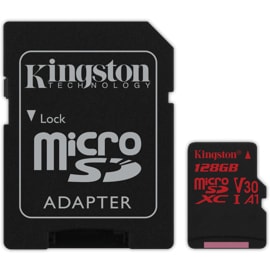I’m doing this only because I’ve done this multiple times and never documented it and had to go through and do multiple google searches each time. Hopefully this is the last time.
First off, install the OpenLDAP server and clients. I’ll install the client on the server too so that I could easily troubleshoot. If you’re using IPtables, you’ll need to open up ports 389 and 636 as well.
yum -y install openldap-clients openldap-servers
Next, I want to do some logging so that I could get messages if I need to troubleshoot. Here’s how to enable the syslog side of logging. Configuring the details of logging from the LDAP server side comes from the cn=config information.
mkdir /var/log/openldap
echo "local4.* /var/log/openldap/openldap.log" >> /etc/rsyslog.conf
systemctl restart rsyslog
Configuring TLS for openldap. This just edits the /etc/sysconfig/slapd file and adds ldaps to it so that it will listen on that port.
sed -i "s,ldap:///,ldap:/// ldaps:///," /etc/sysconfig/slapd
Restart the LDAP server for ldaps to take effect.
systemctl start slapd
systemctl enable slapd
Extending schema of openldap so that it accepts a bunch of the common attributes that typical directory servers have. The adschema attached is to support the MemberOf attribute, commonly used by AD servers. You can put the file anywhere you want. I happened to do this in Vagrant, so my file was in /vagrant.
ldapadd -Y EXTERNAL -H ldapi:/// -f /etc/openldap/schema/cosine.ldif
ldapadd -Y EXTERNAL -H ldapi:/// -f /etc/openldap/schema/nis.ldif
ldapadd -Y EXTERNAL -H ldapi:/// -f /etc/openldap/schema/inetorgperson.ldif
ldapadd -Y EXTERNAL -H ldapi:/// -f /vagrant/adschema.ldif
I’m also extending the schema using some of the schema files provided by OpenLDAP itself.
Now it’s time to configuring rootdn. This is basically the top of the LDAP tree. You should download the file and edit it. Change your directory manager password and the rootdn to whatever you like. You can use dc=xxx or o=xxx.
ldapmodify -Y EXTERNAL -H ldapi:/// -f /vagrant/config.ldif
Now we can add the users. Here’s a sample ldif for the users. Obviously, you’ll need to change the directory to match your rootdn.
ldapadd -x -D cn=ldapadm,dc=poc,dc=segmentationpov,dc=com -w password -f /vagrant/directory.ldif
Congratulations! Your LDAP server is now running. You can test by running this:
ldapsearch -x -D cn=ldapadm,dc=poc,dc=segmentationpov,dc=com -b 'dc=poc,dc=segmentationpov,dc=com' objectclass=* -w password
It should return your entire directory that you uploaded in directory.ldif.
I enabled SSL earlier, but if you try an ldapsearch with SSL, you’ll get this:
[root@centos7 certs]# ldapsearch -H ldaps://192.168.0.117:636 -x -D cn=ldapadm,dc=poc,dc=segmentationpov,dc=com -w password -b 'dc=poc,dc=segmentationpov,dc=com' objectclass=* -ZZ
ldap_start_tls: Can't contact LDAP server (-1)
additional info: TLS: hostname does not match CN in peer certificate
If you want to ignore this and move forward, the setting is on the client side. You can change it in /etc/openldap/ldap.conf. Just put in there:
TLS_REQCERT never
If you get a message like this:
[root@centos7 certs]# ldapsearch -H ldaps://192.168.0.117:636 -x -D cn=ldapadm,dc=poc,dc=segmentationpov,dc=com -w password -b 'dc=poc,dc=segmentationpov,dc=com' objectclass=* -ZZ
ldap_start_tls: Operations error (1)
additional info: TLS already started
The issue is that you’re trying to run StartTLS in 2 places. You can omit the -ZZ and run like this:
ldapsearch -H ldaps://192.168.0.117:636 -x -D cn=ldapadm,dc=poc,dc=segmentationpov,dc=com -w password -b 'dc=poc,dc=segmentationpov,dc=com' objectclass=*
or run with the -ZZ like this:
ldapsearch -H ldap://192.168.0.117:389 -x -D cn=ldapadm,dc=poc,dc=segmentationpov,dc=com -w password -b 'dc=poc,dc=segmentationpov,dc=com' objectclass=* -ZZ
That’s just using the default certificate that comes with OpenLDAP. If you want to use your own certificate, you can put them in
ldapmodify -Y EXTERNAL -H ldapi:/// -f tls7.ldif
SASL/EXTERNAL authentication started
SASL username: gidNumber=0+uidNumber=0,cn=peercred,cn=external,cn=auth
SASL SSF: 0
modifying entry "cn=config"
SV-LT-1361:Downloads altonyu$ openssl s_client -connect 192.168.0.117:636
CONNECTED(00000003)
depth=0 C = US, ST = CA, L = San Francisco, O = ShocKNetworK, CN = ldap.poc.segmentationpov.com, emailAddress = alton@shocknetwork.com
verify error:num=20:unable to get local issuer certificate
verify return:1
depth=0 C = US, ST = CA, L = San Francisco, O = ShocKNetworK, CN = ldap.poc.segmentationpov.com, emailAddress = alton@shocknetwork.com
verify error:num=21:unable to verify the first certificate
verify return:1
Certificate chain
0 s:/C=US/ST=CA/L=San Francisco/O=ShocKNetworK/CN=ldap.poc.segmentationpov.com/emailAddress=alton@shocknetwork.com
i:/C=US/ST=California/O=ShocKNetworK/OU=Security/CN=zangief.shocknetwork.com/emailAddress=alton@shocknetwork.com
Server certificate
-----BEGIN CERTIFICATE-----
MIIEqzCCA5MCCQCsXDM+kPyf+DANBgkqhkiG9w0BAQsFADCBljELMAkGA1UEBhMC













